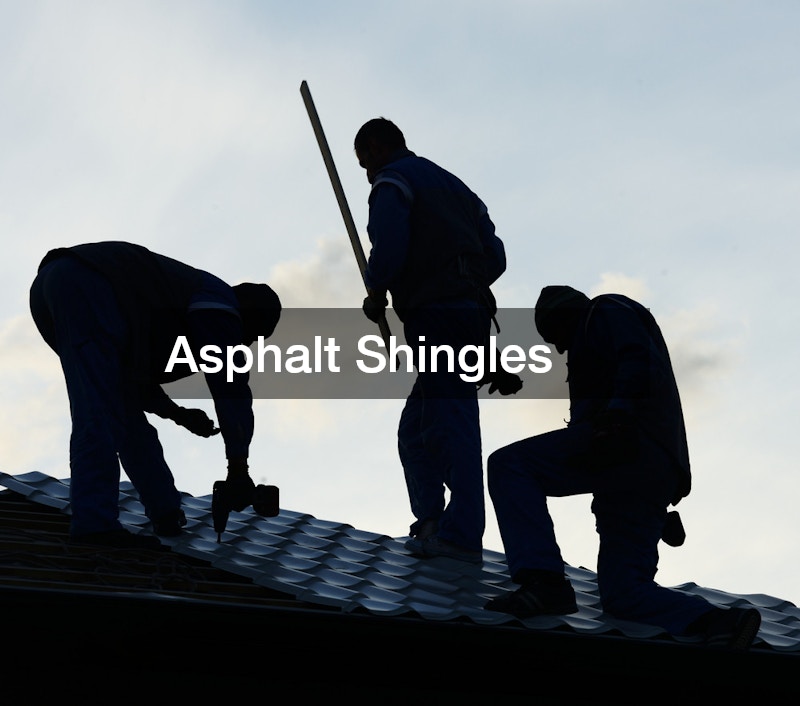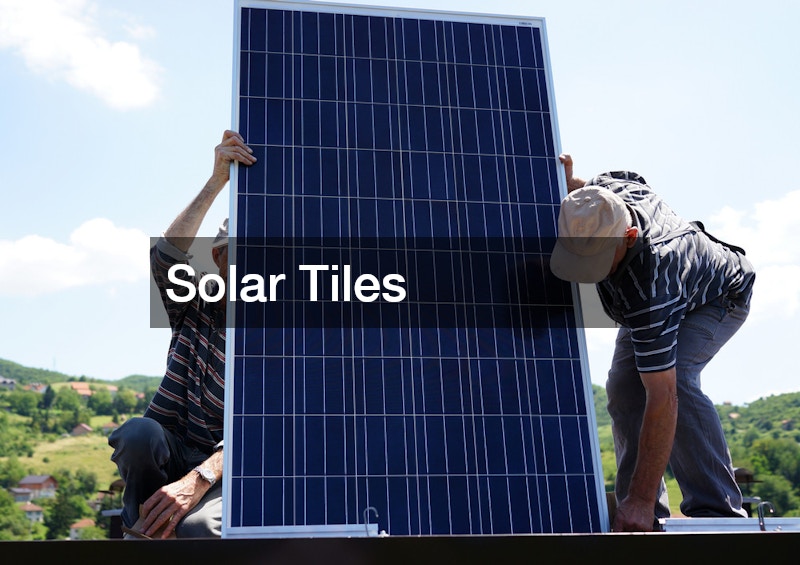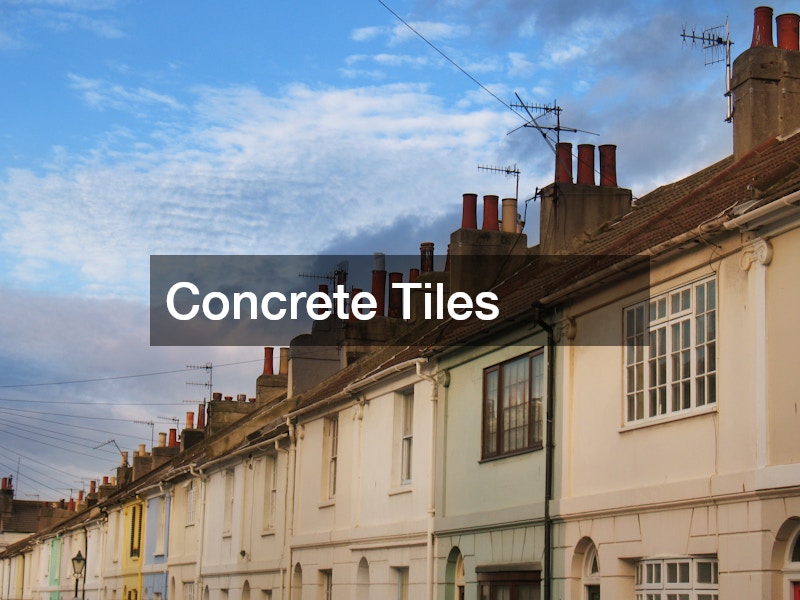Various Roof Materials Local Roofing Companies Can Install
When it comes to enhancing the appearance, functionality, and value of your home, the roof is a critical component that should not be overlooked. As a significant investment, selecting the right roofing material requires careful consideration of various factors, including climate, architecture, budget, and maintenance. Furthermore, the choice of material can also impact your home’s energy efficiency and help reduce long-term costs. Fortunately, local roofing companies offer a wide range of roof materials to suit different preferences and requirements. By understanding the unique benefits and potential drawbacks of each material, homeowners can make informed decisions that will stand the test of time.
In this extensive guide, we will delve into the various roof materials that local roofing contractors can install, including their features, suitability, and maintenance needs. Whether you are considering roof repair or a complete roof replacement, it is crucial to understand the options available to you. As we explore these materials, keywords relevant to the roofing industry, such as retail roofing, roofing suppliers, and metal roofing services, will be discussed to provide a comprehensive overview. Additionally, we’ll touch on the sustainability and environmental impacts of these materials as an increasing number of homeowners prioritize green building practices. Our goal is to equip you with the knowledge necessary to collaborate effectively with roofing companies and make a well-informed decision that aligns with your goals.
Asphalt Shingles

Asphalt shingles are one of the most popular roofing materials in the United States, favored for their affordability, ease of installation, and versatility. Local roofing companies often recommend asphalt shingles due to their relatively low cost and a wide array of styles and colors that complement various home designs. Composed of asphalt-saturated mats and fiberglass, these shingles offer a decent lifespan ranging from 15 to 30 years, depending on maintenance and climatic conditions. They are particularly suitable for retail roofing applications in regions with moderate climates, as they may struggle in areas with severe weather patterns.
The installation process for asphalt shingles is relatively straightforward, making them an ideal choice for both new constructions and roof repair projects. Roofing suppliers offer a variety of options, including architectural and three-tab shingles, to match different aesthetic preferences and budgets. While they require periodic inspection and maintenance to prevent issues such as algae growth and granule loss, asphalt shingles remain a cost-effective option for many homeowners seeking roofing solutions. Their popularity among local roofing companies is also due to the possibility of easy replacement, which can save on long-term repair costs.
Despite their advantages, it is essential to consider the environmental impact of asphalt shingles. While recycling programs are becoming more common, a significant amount of shingle waste still ends up in landfills. As such, homeowners committed to sustainability may wish to explore greener options. However, for many, the balance of upfront affordability and performance makes asphalt shingles a top choice for roofing projects.
Solar Tiles

Solar tiles represent an innovative roofing solution for homeowners seeking energy efficiency and sustainability. These tiles function as both roofing material and solar panels, capturing sunlight to generate electricity for the household. Roofing suppliers have increasingly embraced this technology, offering a range of designs that seamlessly integrate with traditional roofing aesthetics. While the initial cost of solar tiles can be higher than that of conventional roofing materials, their long-term energy savings and potential tax incentives can offset the expenditure, making them an attractive option for some. Roofing companies are starting to include solar tiles in their offerings, recognizing the growing demand for eco-friendly alternatives.
Solar tiles are particularly suitable for new constructions or complete roof replacement projects where homeowners wish to maximize their property’s energy efficiency. Unlike traditional solar panels, which are mounted on top of existing roofs, solar tiles are installed directly along with the roofing material. This integration provides a sleeker appearance and can enhance a property’s curb appeal. Additionally, by reducing reliance on external energy sources, solar tiles can significantly lower monthly utility bills, offering financial benefits that extend beyond the roof’s lifespan. However, it is crucial to work with experienced roofing contractors who are familiar with installing and maintaining solar technology to ensure optimal performance.
One of the main challenges with solar tiles is ensuring that they are compatible with a home’s existing electrical infrastructure. Engaging the services of a knowledgeable roofing company that understands both roofing and electrical considerations is vital for ensuring successful installation and operation. As roofing continues to evolve, incorporating energy-efficient solutions like solar tiles will likely become more prevalent, driven by advancements in technology and increasing environmental consciousness. For homeowners looking to invest in sustainable living, solar tiles present a compelling option that marries innovation with practicality.
Slate
Slate roofing is renowned for its natural beauty, unparalleled longevity, and distinctive aesthetics. Considered one of the most durable roofing materials available, slate can last more than a century with proper maintenance. Local roofing companies often suggest slate for homeowners who prioritize elegance and durability, particularly for historic homes or structures that demand a timeless appeal. The dense nature of the slate provides exceptional resistance to fire, extreme temperatures, and water absorption, making it an excellent choice for roofing projects in diverse climates.
However, the installation process for slate roofs is complex and labor-intensive, requiring expert craftsmanship and specialized tools. As such, it is essential to hire a roofing contractor with proven experience in handling slate materials to avoid costly mistakes and ensure long-term performance. Although the upfront cost of slate can be significantly higher than other materials, its lifespan, minimal maintenance requirements, and ability to enhance property value often justify the investment. Additionally, slabs of discarded slate can be reused or recycled, adding an environmental benefit to this roofing option.
Homeowners considering slate for their roofing repair or replacement should be aware of its weight, which may necessitate additional structural support for the roof. Ensuring that the underlying framework can bear the load is crucial to prevent damage over time. Consulting with a roofing company that understands the complexities of slate installation will help address these concerns. As a classic choice for roofing, slate provides a combination of beauty and resilience that remains unparalleled, appealing to those who seek both aesthetic and functional excellence.
Metal Shingles

Metal shingles offer an excellent combination of durability, energy efficiency, and aesthetic variety. Made from materials like aluminum, steel, copper, or zinc, metal shingles are designed to mimic traditional roofing appearances while providing superior performance. Particularly favored in regions with harsh weather conditions, they are highly resistant to wind, rain, snow, and even hail. Local roofing companies increasingly recommend metal shingles for roofing projects due to their longevity and low maintenance requirements.
Installing metal shingles typically involves specialized metal roofing services to ensure proper fitting and alignment. A major advantage of metal shingles is their ability to reflect solar radiant heat, which can help reduce cooling costs during the summer months. Additionally, metal roofs tend to have a longer lifespan than asphalt, often lasting between 40 and 70 years, making them a sound investment for those planning long-term homeownership. While the initial cost may be higher, the reduced maintenance expenses and extended durability can offset this over time.
In terms of design, metal shingles are available in numerous styles and colors, allowing homeowners to achieve a look that complements their property’s architectural style. Whether you desire a classic or modern aesthetic, metal roofing services can deliver customized solutions tailored to your needs. Furthermore, many metal shingles are manufactured from recycled materials and are 100% recyclable at the end of their life, adding an eco-friendly dimension to this choice. As a versatile roofing option, metal shingles continue to gain popularity among homeowners searching for a roof that combines innovation, sustainability, and lasting performance.
Clay Tiles
Synonymous with Mediterranean and Spanish-style architecture, clay tiles are renowned for their distinctive appearance, durability, and ability to withstand harsh climatic conditions. This ancient roofing material has been used for centuries, proving its worth through its unmatched longevity and aesthetic appeal. Local roofing companies often recommend clay tiles for homeowners wanting a touch of elegance and flair in their roofing projects. Apart from their visual attraction, clay tiles are impervious to rot, insects, and moisture, making them a wise choice for areas prone to extreme weather.
Roof replacement with clay tiles is a process that requires expertise and precision, as improper installation can lead to significant problems down the line. Due to the weight of clay, the roof structure must be adequately reinforced to support the tiles, which can also necessitate additional expenses. Yet, the investment is rewarded with a roof that can last over 50 years, requiring minimal maintenance and offering excellent fire resistance. In addition, clay’s natural composition means it is entirely recyclable, making it an eco-friendly option for those committed to sustainable practices.
Despite their many benefits, clay tiles may not be suitable for all homes due to their fragility under impact from heavy debris, necessitating careful consideration of surrounding environments. Still, a well-maintained clay tile roof can greatly enhance a property’s curb appeal and market value. Understanding the unique characteristics and installation requirements of clay tiles allows homeowners to make informed decisions about their roofing needs, combining cultural heritage with modern resilience.
Concrete Tiles

Concrete tiles offer an alternative to traditional clay tiles, providing similar aesthetics with additional versatility and cost-effectiveness. Made from sand, water, and cement, concrete tiles can be molded into various shapes and finishes, giving homeowners the freedom to choose designs that mimic slate, clay, or even wood. Local roofing companies often suggest concrete tiles for roofing projects due to their strength, durability, and relatively lower cost compared to clay tiles.
One of the notable advantages of concrete tiles is their ability to adapt to different climates, from hot and arid to cold and snowy regions. Roofing contractors appreciate the versatility and customizability of concrete tiles, which can be colored and textured to suit a wide range of architectural styles. While concrete tiles are heavy and installation requires substantial structural support, their longevity, and resistance to fire, wind, and rain make them a practical option for long-term investments. Like clay, concrete tiles are made from natural materials, often incorporating recycled content, contributing to their sustainability.
A critical consideration for homeowners is the potential for color fading over time, particularly in regions with strong sunlight. However, manufacturers have developed treatments and coatings to mitigate this issue, helping retain the tiles’ visual appeal. Overall, concrete tiles offer a durable, cost-effective roofing solution that balances strength, beauty, and environmental responsibility. Engaging a knowledgeable roofing contractor is vital to selecting and installing concrete tiles that meet both functional and aesthetic requirements.
Rolled Roofing
Rolled roofing is an economical and straightforward option primarily used for low-slope or flat roofs on residential buildings. It typically consists of long rolls of mineral-surfaced material, similar to asphalt shingles, but in a roll format, allowing for quick and easy installation. Local roofing companies frequently recommend rolled roofing for roofing projects involving garden sheds, workshops, or garages, where costs and simplicity are the main concerns.
A key advantage of rolled roofing is its affordability, making it a popular choice among budget-conscious homeowners. The installation process is uncomplicated, with the materials rolled out in strips across the roof surface and sealed with a roofing adhesive. However, its lifespan is relatively short compared to other roofing materials, often requiring replacement within five to ten years. This can be offset by the material’s cost-effectiveness and ease of repair, making it a viable option for temporary structures or supplementary buildings.
While some homeowners consider rolled roofing as an option for primary residences, it generally lacks the aesthetic appeal and durability necessary for more prominent structures. Nevertheless, it can serve as a practical solution for flat roofing needs where visual impact is less of a priority. Working with experienced roofers ensures that rolled roofing is installed correctly, minimizing potential leaks and extending its service life. As roofing evolves, rolled roofing remains a viable choice for specific applications, and it is appreciated for its straightforward installation and economic benefits.
Green Roofing
Green roofing, also known as living roofs, represents an environmentally friendly alternative that integrates vegetation with traditional roofing structures. These roofs offer numerous benefits, including enhanced insulation, improved air quality, and reduced stormwater runoff. Local roofing companies are increasingly adopting green roofing solutions in their offerings as more homeowners and businesses seek sustainable practices. By transforming unused roof space into a lush, vibrant landscape, green roofing contributes positively to urban ecosystems and building efficiency.
A well-designed green roof consists of multiple layers, including a waterproof membrane, drainage system, substrate, and vegetation. This complexity requires the expertise of a roofing company experienced in green roof installations to ensure proper implementation and maintenance. Although the initial costs may be higher due to the specialized materials and labor involved, long-term savings can be realized through reduced energy costs and extended roof lifespan. Furthermore, green roofs can significantly dampen rooftop temperatures, mitigating the urban heat island effect and contributing to cooler cityscapes.
The maintenance of a green roof depends on the type of vegetation used, with options ranging from low-maintenance sedums to more intensively managed gardens. Regular roof cleaning services can help keep the system functioning optimally, ensuring plant health and system performance. As awareness of environmental issues grows, green roofing continues to gain traction, cementing its place in the roofing market. For environmentally-conscious homeowners and businesses, green roofs present a valuable opportunity to invest in sustainability while enhancing building aesthetics and performance.
Choosing the right roofing material is a crucial decision that impacts not only the aesthetics of your home but also its energy efficiency, maintenance needs, and overall value. With a wide range of options available, from traditional asphalt shingles to innovative solar tiles, local roofing companies offer extensive solutions tailored to various preferences and requirements. Each material presents its unique set of benefits and considerations, making it important to carefully evaluate factors such as climate, architectural style, budget, and sustainability goals when planning a roof repair or replacement project.
As we have explored, roofing encompasses materials like slate, metal shingles, clay, and concrete tiles, each offering distinctive features that cater to different aesthetic and functional needs. While metal shingles and solar tiles provide energy-efficient alternatives, slate and clay tiles continue to captivate with their timeless elegance and durability. Meanwhile, rolled roofing and green roofing offer specific advantages for particular applications, emphasizing affordability and sustainability, respectively. Collaborating with experienced roofing contractors and understanding the nuances of each material can help homeowners make informed decisions that align with both immediate goals and long-term investments.
The roofing industry continues to innovate, advancing materials and practices to meet the demands of modern living and environmental consciousness. As roofing evolves with these trends, homeowners have more opportunities than ever to enhance their homes while contributing to sustainable practices. By carefully considering the options and working with reputable local roofing companies, homeowners can ensure a successful project that delivers lasting benefits, both aesthetically and functionally.

